A cute snug crochet beanie is something that works all through the year - and for summer, cotton yarns are the way to go. I've used a very simple pattern today with some lovely soft cotton - a contrast color for a few rows to just make it all pop out and I think the end result is stunning.. don't you agree? And this project is reversible - how cool is this, eh? Come along and let's start on this now. Today I’ve used some of Anette Eriksson's Jeans yarns with a 4 mm crochet hook
Now, my patterns require a small amount of thinking and calculation - but that is just so that you can use any yarn with a suitable hook to make it to any size you want. That's fun, right? Thank you for joining me.
In case you have just joined me, know that you can access all of my earlier creations by checking under ‘categories’ on the right hand side of this blog under “Labels”. Then, for your convenience, follow me here or on Facebook, You Tube, Pinterest, Twitter or Instagram.
Oh, and may I add that the fastest way to find any of my blogs is via Pinterest and for more headwear patterns come here.
All my blogs can be printed. Find the printer friendly (green) link on the side and at the bottom of this blog. You can also hit Control P (or Command P for Mac) on your keyboard, and the blog will go directly to the connected printer.
Remember that you only print if absolutely essential. Save paper – Save Our Earth.
Do remember to add my blog URL when you make and show off your creation.
Just copy the link on the search bar above - that's the blog URL.
To purchase a similar yarn online, click here to buy your yarns online via Amazon. While you will still pay the same, I may get paid by Amazon as well.
This is a free blog - so do pay it forward for me. Cheers.
Materials used : Today I’ve used about 75 gm (in 2 colors) of Anette Eriksson's Jeans cotton yarns with a 4 mm crochet hook ; fabric glue ; embroidery needle General yarn info : The yarn used today is not specific to this pattern.
You can use any yarn with a suitable hook to make this project to any size.
With a finer or more delicate yarn, you end up with a finer or more delicate end product. The spikes will show but thicker yarns show up better.
Half Double Crochet : Hdc : yo, insert hk into st ; yo (3 lps on hk) ;
yo, draw through all 3 lps. One hdc made.
Chainless start for Half Double Crochet : I dislike the ch-2 start, and this is what I do to start my row of hdc. Check out the video at https://youtu.be/lWXpl1KdbZ8 Double Crochet : dc : yo, insert hk into st ; yo (3 lps on hk);
[yo, draw through 2 lps] twice. One dc made.
Chainless start for Double Crochet : I dislike the ch-2 / ch – 3 start, and this is what I do to start my row of dc.
Here is a sizing chart for general head sizing : here or here
Abbreviations used : (Using U.S terminology)
lp(s) : Loop(s) sc : Single crochet
dc : Double crochet sp : Space
sl-st : Slip stitch ch : Chain
st(s) : Stitch(es) hk : Hook
yo : Yarn Over
Instructions using U.S terminology
Please note that I start all my rows with a ch 1, turning chain for ease.
Please check the top of this blog for easy video tutorials on all stitches used in today's pattern.
Please read through all my notes before you pick up your hook, so you know just where we're heading in our pattern.
There are 4 parts to making this beanie - Part 1: making the rectangle ; Part 2 : deciding on finishing the edges ; Part 3 : Joining the two shorter ends of your rectangle to make a cylinder ; & Part 4 : Joining one end of the cylinder to make it into a beanie.
The pattern I've used is from Ananda Judkins Diagonal Dishcloth
here
PART 1 :
1) This pattern is worked as a long rectangle using the back loop all through the project.
2) The length of the strip will be the circumference you need for your project and if you want to add the knot then it's a little more for that bit too.
3) The pattern is worked in a rectangle from one corner (like a C-2-C). The length of the left hand side of your work (starting edge) will be the length of your beanie from crown to base of ear. The width of your work (ending edge) will be the circumference of your head.
4) The (original) diagonal dishcloth pattern is worked as a square. We're using the same idea / principle to work this into a rectangle. The difference is that your length and width (numbers) are your own to calculate.
Start from the left hand side and increase (as per pattern) on both edges
Work your increases on both edges till you have the length you need for your beanie (on the left hand side of your work)
Just for a pop of color, I added a few rows with a contrast color. You can start on the contrast color at any time during your project. I worked my contrast color in after I had the length (height from crown to forehead) and I only did one strip - but you could add 2 strips of contrast as well - and that will look amazing. Go ahead and try and remember to tell me (via my blog or social media) how that went. Cheers
Note 1 : How do I calculate the circumference needed?
Below see the chart (which is from the general head sizing chart link above).
See the size you want to make the beanie for - if its say a Small Adult, the circumference needed is 22". Now depending on the looseness/tension of your work and the stretch of your yarn, make the first fdc row 22" and then join with a sl-st to make this your first round. Got it?
Now once you have worked out the circumference, the same chart will show you length of beanie. So again lets check the small adult and the length is 8.25"
So for this size, you will work the pattern till you have the left hand side (starting edge) 8,25". You will then stop increases on the left hand side and continue increasing (in pattern) only on the right hand side of your work. Once the right hand side reaches 22" (or lesser, depending on the stretch of your yarn and the tension/looseness of your work), you will stop increases on the right hand side as well and then you will be decreasing on both ends of your work till you end up with a tiny triangle to finish (which will be on the top right hand side of your work).
Once you finish your flat rectangle, look at the finishing ideas
PART 2 : Finishing Ideas :
There are several ways to end your lovely project - so first figure this out and then I'll tell you how to add that knot
1) Continue the pattern all the way to the end - i.e. to the length you want for your project ;
2) Work one row of sc (along top and bottom of headband - (which is what I've done) ;
3) Work one row of sc (along top and bottom of headband) and then you could work a round of Crab stitch all around the brim of your project. If you choose to do this, and you're making a headband, then please go back to the first round and work the same pattern that end as well.
Part 3 : Sewing the ends : Once your knot is in place all that's left is to sew the two ends of your headband. Choose one of the methods given below to neatly sew the ends of your project to create a beautiful knotted headband.
Part 4 : How to make this into a beanie? : The beanie is just with a spike stitch - there is no knot in it.
First off, check the pattern link given right on the top of this blog - it's slightly different from this idea given below.
If you want a simpler idea, then you will work the pattern in exactly the same way as you would for a headband. The only difference is that you will just work the first row only for the circumference needed. This means that for a 22" circumference, you will work just that much.
Then work the length you need. i.e. : If you are making it for Small Adult, the sizing chart specifies that it needs to be 8.25". So you will start the first round with multiples of 6 in fhdc and work till you have that first round 22". Then work the pattern rounds and the repeats till you have a finished length of 8.25"
You now have a cylinder. Using an embroidery needle, run a round of simple running /basting stitch (which is literally pushing the needle and thread up and down through the top of your beanie) all around the end. It does not matter which end you use as both are the same. I'd advise using 2 skeins (or doubling up your yarn) for strength.
Lightly tug on your yarn as you work around till you close that end of the beanie. Continue working running/basting stitches and tugging on your yarn till you have a perfectly closed circle. Ta Da ! Beanie done !
run a round of simple running /basting stitch
Lightly tug on your yarn as you work around till you close that end of the beanie
Continue working running/basting stitches and tugging on your yarn till you have a perfectly closed circle
Whatever you do, this is a wonderful project.
Enjoyed this ?? I sure did.. come back right here for more freebie patterns
If you're visiting me here for the first time, and have liked the experience, do add me to your mailing list (for your convenience) , and all my future free patterns will come straight to your mail box.
I’d appreciate if you could credit my blog (and link the original pattern link) when you make your own creation. Thanks.
Have a great day and see you soon.
I have a few pieces of headwear already made, and just in case you want a dekho at those free patterns … here you go
https://shyamanivas.blogspot.in/2014/08/beanies-berets-baby-turban-n-more-1.html






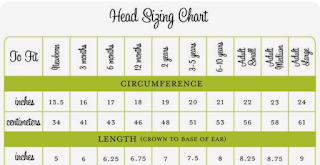



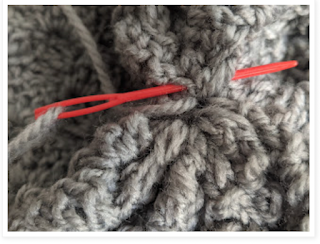
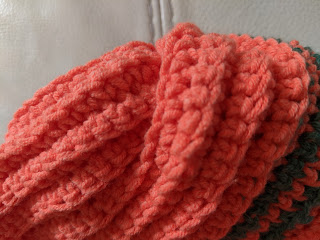
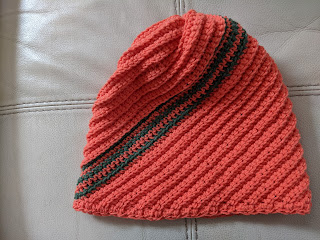





















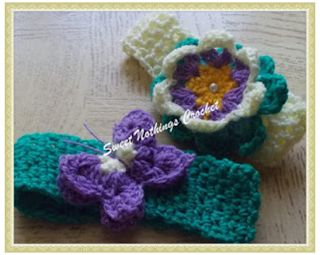























No comments:
Post a Comment
Thanks for taking the time to stop by. Do tell me what you think. Cheers